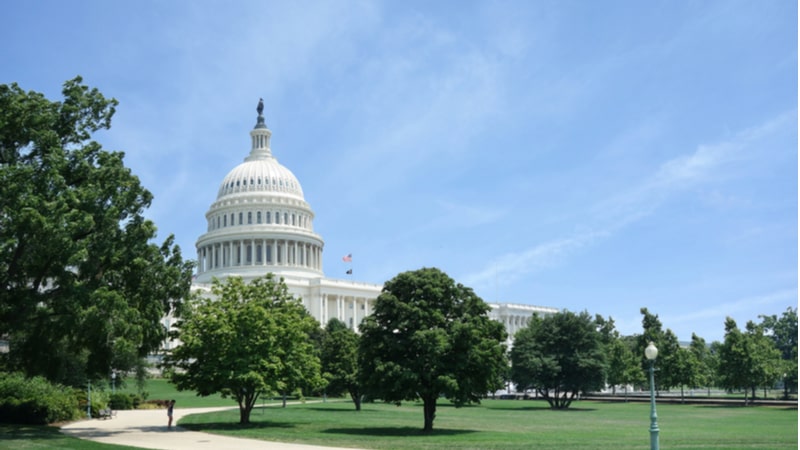
Democratic leaders in both chambers of Congress announced Nov. 17 that they will form a conference committee to resolve differences between the Senate-passed United States Innovation and Competition Act (USICA) and the House-passed National Science Foundation (NSF) for the Future Act – thus creating a pathway to passage for the supply chain and research investment bills.
Sen. Majority Leader Chuck Schumer, D-N.Y., had previously announced his intentions to add USICA as an amendment to the Senate’s fiscal year (FY) 2022 National Defense Authorization Act (NDAA), but changed courses after Senate Republicans signaled they would oppose the typically bipartisan defense spending bill if USICA was included.
“We are pleased to announce that we have reached an agreement for the House and Senate to go to conference on the United States Innovation and Competition Act,” Sen. Schumer and House Speaker Nancy Pelosi, D- Calif., said in a joint statement. “Working with President Biden, the House and Senate have been crafting bipartisan legislation to bolster American manufacturing, fix our supply chains, and invest in the next generation of cutting-edge technology research.”
With the USICA amendment stripped out, the NDAA is back on its own path towards passage in the chamber. Sen. Schumer has said he wants the bill passed before the Senate leaves for its Thanksgiving break.
USICA and the Alternatives
The Senate passed USICA – which began the legislative process as the Endless Frontiers Act – in early June. The bill includes $52 billion for the creation of an NSF Directorate of Technology and Innovation and another $52 billion for CHIPS Act implementation. The latter is legislation that would boost domestic semiconductor production that was included in the FY2019 NDAA.
Despite the bill’s passage through the Senate, the House of Representatives decided to chart a course of their own, passing two alternatives to USICA in late June: the NSF for the Future Act and the Department of Energy Science for the Future Act.
The NSF for the Future Act similarly includes funding for a new science and tech directorate at NSF – called the Directorate for Science and Engineering Solutions – as well as funding for semiconductor manufacturing and significant domestic investment in the sciences.
The Department of Energy Sciences for the Future Act would invest $50 billion over five years in the Department of Energy’s Office of Science and National Labs and invest in renewable energy and research on emergent tech. Taken together, the two House bills represent a large portion of the spirit of USICA.
“While there are many areas of agreement on these legislative proposals between the two chambers, there are still a number of important unresolved issues,” Sen. Schumer and Rep. Pelosi said. “The House and Senate will immediately begin a bipartisan process of reconciling the two chambers’ legislative proposals so that we can deliver a final piece of legislation to the President’s desk as soon as possible.”
Busy Schedule Gets Busier
The conferencing of USICA and working to find common ground between the chambers is now another agenda item added to an already hectic legislative schedule.
The Senate has been considering the NDAA this week while the House inches closer to a vote on the Build Back Better (BBB) Act – Democrats’ FY2022 reconciliation bill, which is laden with IT and cybersecurity-related provisions. Congress will also need to reach an agreement on a continuing budget resolution, by Dec. 3., and raise the debt limit shortly after that. Senate Democrats will also need to take a crack at the BBB legislation once it passes the House.
Almost immediately after announcing USICA will not be a part of the Senate’s FY2022 NDAA, the Senate invoked cloture on the defense bill, which clears away the possibility of a filibuster and pushes the bill closer to a vote. The House has passed the FY2022 NDAA Sept. 24 with a number of tech amendments.
